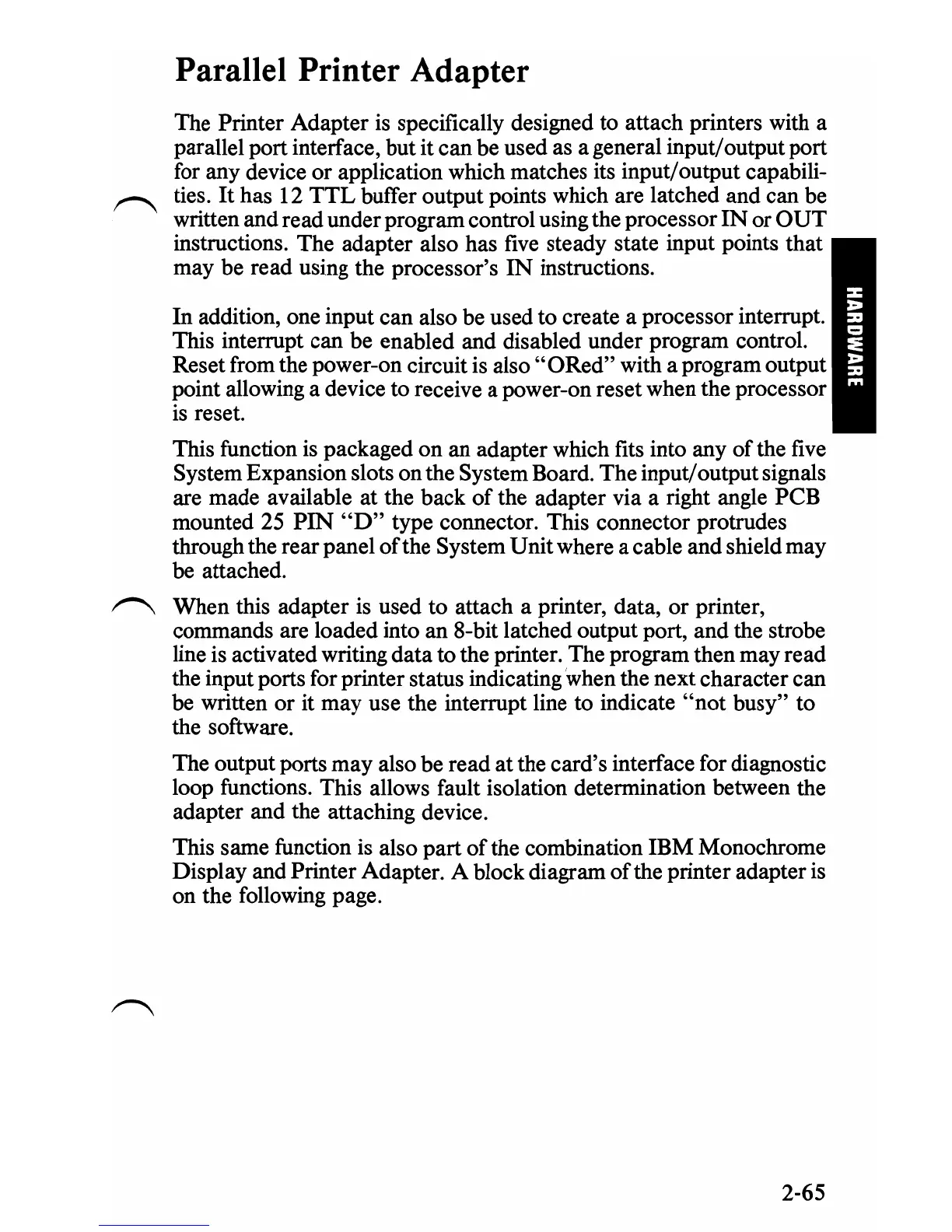Parallel Printer Adapter
The Printer Adapter is specifically designed to attach printers with a
parallel port interface, but it
can
be used as a general input/output port
for any device
or
application which matches its input/output capabili-
ties.
It
has 12
TTL
buffer output points which are latched and can be
written and read under program control using the processor
IN
or
OUT
instructions. The adapter also has
five
steady state input points that
may be read using the processor's
IN
instructions.
In
addition, one input
can
also be used to create a processor interrupt.
This interrupt can be enabled and disabled under program control.
Reset from the power-on circuit is also
"ORed"
with a program output
point allowing a device to receive a power-on reset when the processor
is reset.
This function is packaged
on
an adapter which fits into any
of
the five
System Expansion slots on the System Board.
The
input/output signals
are made available at the back
of
the adapter via a right angle PCB
mounted 25
PIN
"D"
type connector. This connector protrudes
through the rear panel
of
the System Unit where a cable and shield may
be attached.
"..-...,
When this adapter
is
used to attach a printer, data,
or
printer,
commands are loaded into an 8-bit latched output port,
and
the strobe
line is activated writing data to the printer. The program then may read
the input ports for printer status indicating when the next character can
be written
or
it may use the interrupt line to indicate
"not
busy" to
the software.
The output ports may also be read
at
the card's interface for diagnostic
loop functions. This allows fault isolation determination between the
adapter and the attaching device.
This same function is also part
of
the combination IBM Monochrome
Display and Printer Adapter. A block diagram
of
the printer adapter is
on the following page.
2-65
